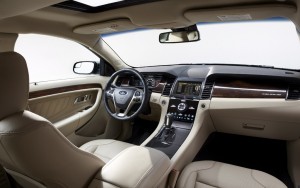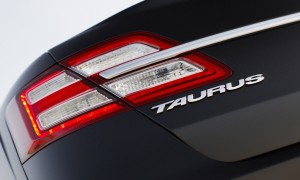
A 2.0-liter four cylinder may sound small for a full-sizer, but Ford makes it work with turbocharging and direct injection.
Car enthusiasts love the small car/big engine formula when it comes to sports cars. But now automakers are starting to flip the formula, putting small engines in big cars.
None have been more aggressive than Ford with its EcoBoost engine strategy. A case in point is the refreshed 2013 Taurus, where the 2.0-liter EcoBoost is now an option to the standard 3.5-liter V-6. Of course, another engine carrying the EcoBoost name, the 3.5-liter twin turbo is still available in the high-performance SHO.
The tenets of EcoBoost are smaller displacement, direct fuel injection and turbocharging and providing performance that is similar to the bigger engine with better fuel economy.
The smaller engine comes up 48 horsepower short compared to the standard V-6, but it actually has more torque: 270 vs. 254 pound-feet. And it peaks at lower rpms: 3,000 vs. 4,000.
But the bottom line is fuel economy. The 2.0-liter is rated at 22 city and 32 highway, both three higher than the V-6. We saw 25 in a combination of freeways and rural two-lanes.
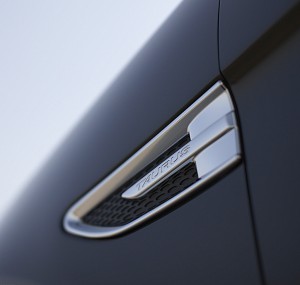
The Taurus has several features aimed at improved fuel economy including active grille shutters, active transmission warm-up and smart battery management.
Unlike in the past, it’s the fuel-economy engine that is the option. At a price of $995, buyers should do a cost analysis to figure out if the EcoBoost is worth the extra coin. If you drive 15,000 miles a year, you’ll use 600 gallons at 25 mpg. The V-6 would use another 81 gallons to go the same distance, saving you $324 per year at $4 per gallon. So EcoBoost would pay for itself in just more than three years.
That’s not a bad trade-off because other than better mileage, there isn’t much to distinguish the V-6 and the turbo four. With fewer horses, but more torque, performance is similar. The four is, of course, not as smooth as the six, but Ford has done a good job isolating it from the cabin. About the only thing passengers will notice is a somewhat odd resonance at lower rpm in higher gears.
The 2.0 liter is available across all Taurus trim levels except SHO. While all-wheel drive is available with the regular V-6 and standard on the SHO, it is not available with the four.
Of course, the low rpm/high gear formula is pretty much the norm for the six-speed automatic that is the only transmission offered with the 2.0.
Besides getting EcoBoost, the Taurus gets mildly refreshed styling with a new take on the three-bar grille and other changes including full LED taillights.
Ford also added torque vectoring control, which uses a slight amount of braking force on the inside front wheel when accelerating through a corner. It also has Ford’s curve control, a braking control feature aimed at slowing the car if it senses a driver inadvertently entering a curve too quickly. With application of four-wheel smart braking, the car can reduce speed swiftly. Drivers will rarely even sense these systems working.
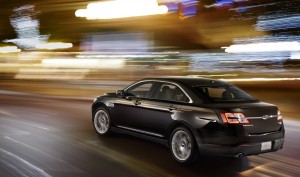
Taurus adds Torque Vectoring Control, which uses smart brake control to help the car smoothly accelerate through curves, which helps build confidence for drivers.
Not surprisingly, the Taurus offers a cushy ride, although there’s a bit too much body roll. Not surprisingly, it doesn’t like to hurry through corners.
Inside, the Taurus gets the latest version of MyFordTouch and Sync. The test car, a Limited equipped with the up-level Sony infotainment system with navigation, continues to improve on the controversial system. While Ford continues to improve the voice recognition system, it still doesn’t feature haptic feedback to let you know that you’ve successfully operated one of the few virtual buttons on the piano-black center stack. If you are willing to learn everything that the system can do, it offers a lot of features which help you keep your hands on the wheel.
The interior feels surprisingly cramped for a full-size sedan. Part of that is the overstuffed seats, which are cushy soft.
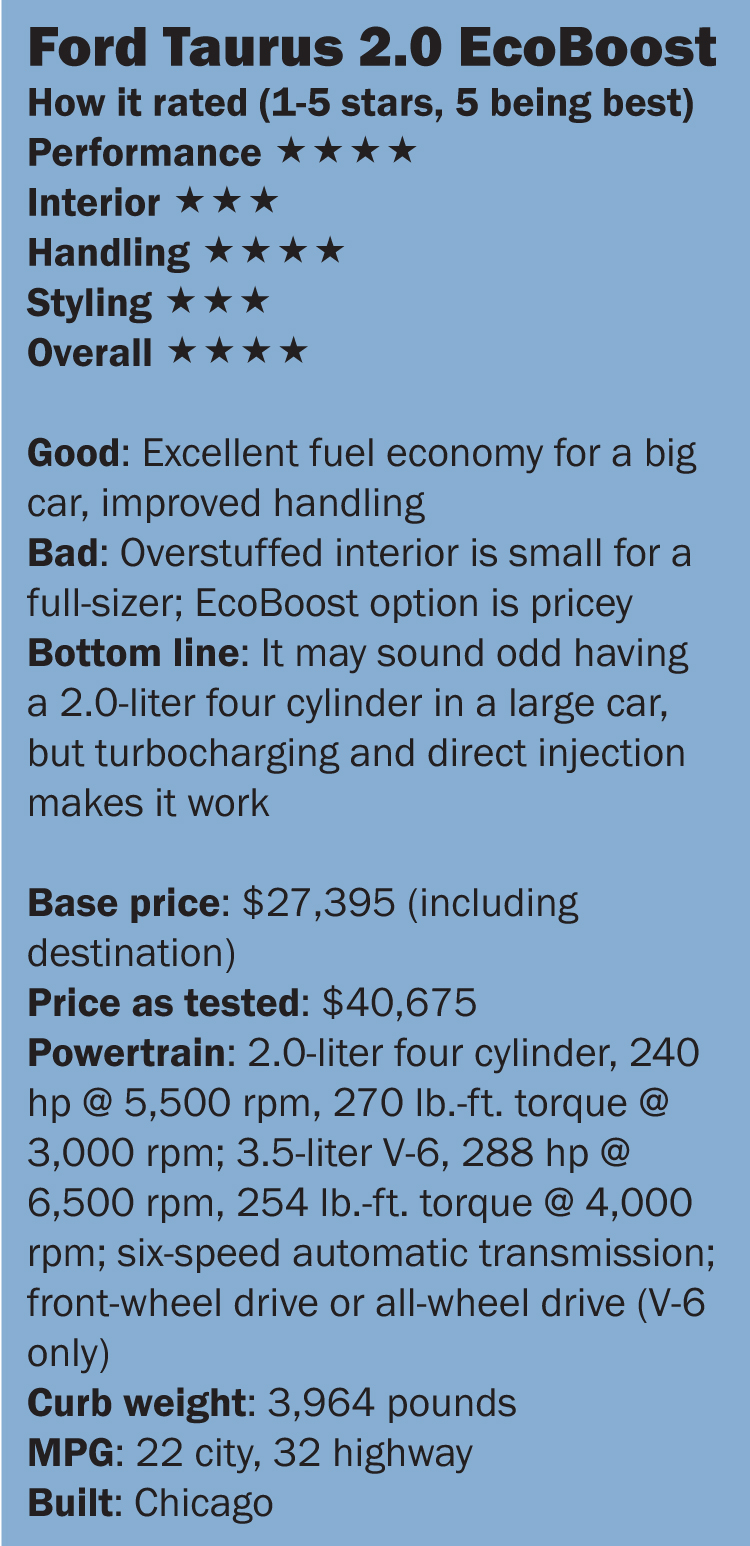 While the interior is improved from the previous model, there are a few parts that didn’t line up well in the test car and the top of the dash is rather shiny.
While the interior is improved from the previous model, there are a few parts that didn’t line up well in the test car and the top of the dash is rather shiny.
Rear seat passengers won’t scrape their knees on the seatback, but there isn’t stretch-your-legs room, either. In front, the Taurus has a big hump at the leading edge of the seats, an annoyance for anyone who likes to drive or ride with a leg bent. It’s a complaint that the Taurus has in common with all of the vehicles that ride on this platform including the Explorer, Flex, Lincoln MKS and MKT.
While the interior seems a little cramped for such a large car, the same cannot be said about the trunk, which, with 20.1 cubic feet, looks big enough to host the office Christmas party.
Taurus pricing opens at $27,395 including destination for the base SE, one of three Taurus trim levels (plus the high-performance SHO). The Limited tested here carries a base price of $33,795. Options including the EcoBoost, Ruby Red metallic paint ($395), voice-activated navigation ($795) and adaptive cruise control ($1,195) push the bottom line to $40,675.
Engines are getting smaller, even those in big cars. Taurus buyers will have to decide if the savings at the pump are worth the up-front cost.

